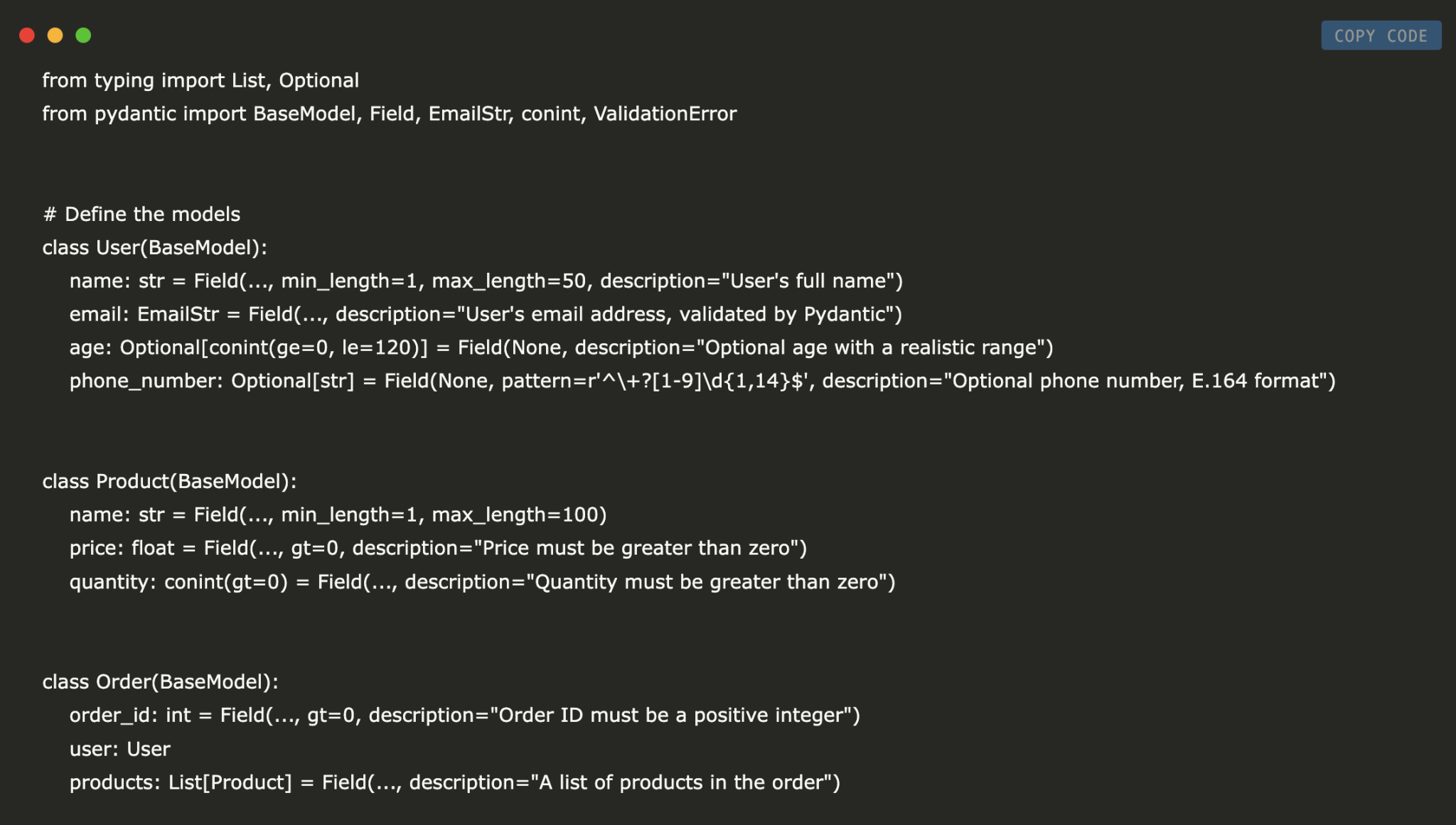
Understanding Pydantic for Data Validation in Python
In modern Python applications, especially those dealing with incoming data like JSON from APIs, it’s vital to ensure that the data is valid and correctly formatted. Pydantic is an excellent library that helps you define data models using Python-type hints and automatically validate incoming data against these models.
Practical Example: User, Product, and Order Models
We will demonstrate how to model a typical scenario: a user placing an order for products. Using Pydantic, we will create models for User, Product, and Order, ensuring data elements like emails, prices, and quantities meet specific criteria.
Step 1: Install Dependencies
To get started, you need to install Pydantic:
- pip install pydantic – This installs the core library for data validation.
- pip install pydantic[email] – This includes built-in email validation features.
Step 2: Define Pydantic Models
We will create three models: User, Product, and Order. These models will ensure:
- User: Validates name, email, optional age, and an optional phone number.
- Product: Ensures valid name length, positive price, and non-zero quantity.
- Order: Combines user and products while calculating the total order cost.
Step 3: Implement Validation
In the main() function, we simulate receiving data for a user and multiple products.
- We create user and product dictionaries.
- We validate the data by instantiating models.
- If the data is valid, we print the models and the total cost; if not, we show validation errors.
Step 4: Run the Program
By calling main(), we execute the process, validating the user, product, and order data.
Output Example
The validated models and total cost are displayed. For instance:
- User Model: name=’Jane Doe’, email=’jane.doe@example.com’
- Total cost of the order: 89.97
Conclusion
This example illustrates how Pydantic effectively defines and validates data models for User, Product, and Order in real-world scenarios. It ensures that any data processed is correct, catching errors early and simplifying code logic. This boosts reliability in data-intensive applications.
Explore More with AI
To enhance your company’s competitiveness with AI, consider these steps:
- Identify Automation Opportunities: Find customer interaction points that can leverage AI.
- Define KPIs: Ensure measurable impacts from your AI initiatives.
- Select an AI Solution: Choose tools that meet your specific needs.
- Implement Gradually: Start with a pilot project and expand based on insights.
For AI management tips, connect with us at hello@itinai.com. Stay updated on AI insights through our Telegram t.me/itinainews or Twitter @itinaicom.



























